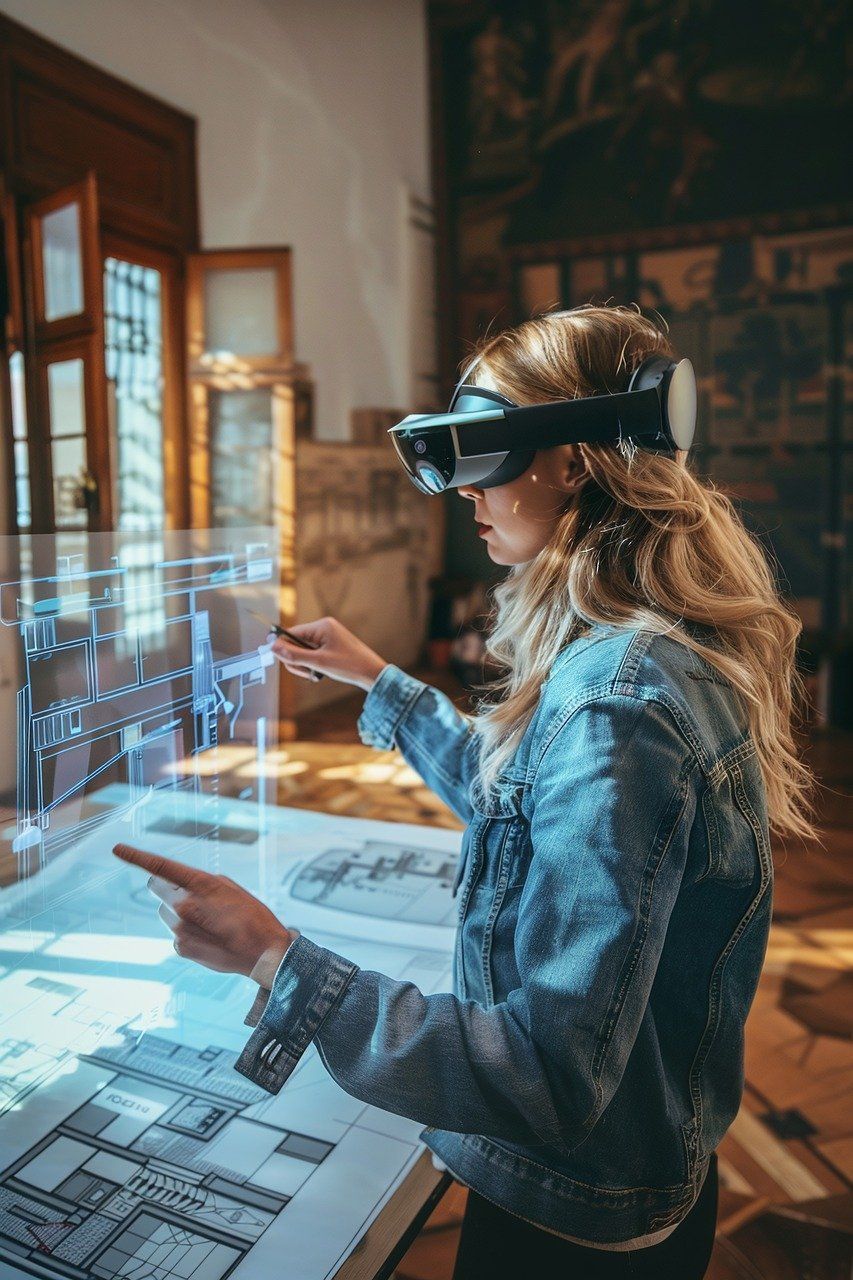Augmented and Virtual Reality: The Next Big Thing in Equipment Finance Training and Sales
The equipment finance industry is continually evolving due to technological advances that improve processes, training and customer interaction. Among these technologies are Augmented Reality (AR) and Virtual Reality (VR), which could represent one of the most recent efficiency disruptors in the field. AR and VR are showing how the old way of thinking about training in lease finance can be improved to better shape sales strategy.

Introduction to AR and VR in Equipment Finance
AR and VR technologies replicate and enhance the real world with interactive digital utterances, with VR aiming to provide a completely simulated environment for its users where the goal is to create a life-like experience, fully immersing the user in a virtual world using a head-mounted display. In AR, information is superimposed over a genuine (or ‘real world’) surface, enhancing the real world with computer-generated perceptual information. In the equipment finance market, these technologies are starting to be adopted to enhance program's, training sessions and the sales process.
Advanced training tools are necessary to prepare all finance professionals, from newcomers to experienced professionals, for unexpected challenges. Likewise, due to the competitive nature of equipment finance, innovative sales strategies are needed to make clients more engaged in consultations with financial service providers. AR and VR can help solve these issues by providing a low-stakes environment where professionals can implement and analyze different training and sales strategies..
Enhancing Training Programs
AR and VR education program's are transforming the learning process into a much more experiential and interactive experience. As learning methods based on blending sensory and semantic knowledge often
provide superior teaching outcomes compared to those delivered through a single semiotic modality such as classroom-based learning, AR and VR could readily function as effective teaching resources that even an experienced professional ultimately values.
Especially in the world of an introductory analyst or in audit, where off-site visits are common to inspect machinery, this can now all be taught to multiple students in a decentralized way from the comfort of their own homes using VR, or utilizing AR during On-site visits that assist in calling out typical hidden factors that could play a role in the the asset valuation and overall risk assessment of the deal.
VR simulations can even obscure the reality of an activity, but in a way that actually benefits the trainee: for instance, a VR training in sales can be risk-free, so the trainee can negotiate and go through multiple sales techniques to perfect them with unique audiences whilst suffering the consequences of an embarrassing loss without real-world harm. The knowledge that they can’t botch the job during training can better prepare the trainee to succeed once they graduate to the real thing. VR can simulate activities such as a lease negotiation, a financial planning session or dealings with an apathetic client and many more which positions this technology as a potential long-term solution for an organization’s training needs.
Using VR reduces associated costs of training and enhances efficiency.
Transforming Sales and Customer Engagement
AR and VR can also be used in sales and customer engagement. Interactive product demonstrations create opportunities for prospective clients to experience lease and financial products that are customized to suit their specific needs. In AR, abstract concepts are made concrete as theoretical financial data and leasing plans can be discussed whilst being able to view the collateral in HD and 360 degrees functionality. VR extends such value-adds by enabling virtual face-to-face meetings and virtual inspections. Sales professionals can leverage head-mounted displays to conduct face-to-face meetings with remote lessors in an immersive virtual setting creating a more engaging environment.
For AR/VR to be as effective as possible, it will require software providers in the equipment finance industry, such asLeaseSpark, to look at engaging with VR and AR content. Having the ability to save, open and interact with this content directly between stakeholders within equipment financing software would break down a lot of communication barriers.
Challenges and Future Prospects
Despite the many advantages of such a system, it will not be easy for the equipment finance industry to adopt and integrate AR/VR. AR/VR is a major jump into innovation that requires the full supply chain of equipment financing from lessor to lender to have AR/VR headsets, supporting technology and the knowledge to use such a system. It will be more likely that AR/VR technology is widely adopted if more and more of the general population start to use these technologies in their day to day life for things like ordering groceries and socializing with friends etc. capital-intensive investment, and requires training to use effectively.
While it is hard to predict the future, we can be certain that AR and VR tools for equipment finance are on the rise. Since technological advancements tend to make these tools more affordable and easier to implement, the more we use AR and VR, the more benefits we will find. The more businesses adopt AR and VR, the more innovative each company will be when it comes to training and sales. Advancements in artificial intelligence and machine learning could also amplify the potential of AR and VR even further.
We will start to see higher adoption of AR/VR from certain areas of the equipment finance landscape such as analysts for audits or insurance within the likes of submarine or aircraft financing. It is understandable that having a computer powered smart device as a headset providing an extra set of eyes would be very advantageous in these scenarios.
In summary, AR and VR can revolutionize the extensive training and sales of equipment finance. These technologies can elevate learners’ training and enable them to practice more efficiently and holistically in a natural way, which also enables them to accumulate richer experiences. Additionally, AR and VR can bring changes that profoundly impact the process of customer engagement. These enhancements improve efficiency and elevate the consumer experience.



Case Studies
InfoHUB
©2025 TAO Solutions
Terms & Conditions | Privacy Policy | SOC 2 | ISO | Gold MS Partner | Accessibility








